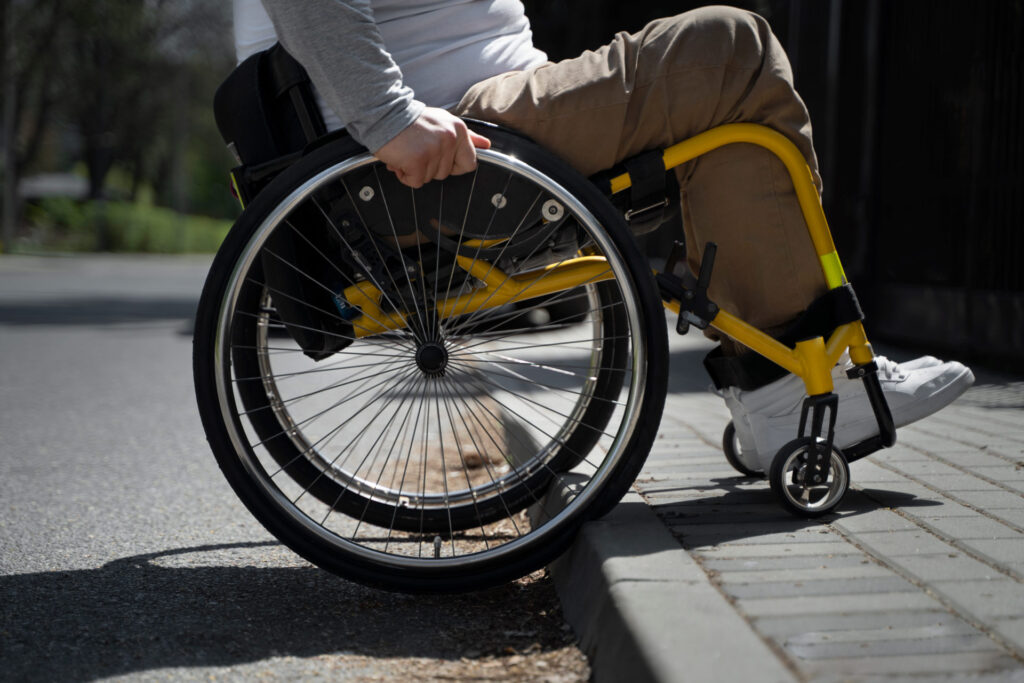Imagine a simple design choice—a slight dip in a sidewalk curb—that transforms accessibility for wheelchair users. Now, think about how this small change also benefits parents with strollers, travelers with luggage, and workers pushing carts. This phenomenon, known as the curb cut effect, goes far beyond sidewalks. It illustrates a universal truth: when we design systems to empower marginalized groups, we create ripple effects that uplift everyone.
As someone who has witnessed the transformative power of inclusion in my own life—most notably through my son Stone’s journey as a non-speaking autistic individual—I see the curb cut effect play out in profound ways in education, healthcare, and communication. Stone’s story is a testament to how presuming competence and providing access to tools like Spelling to Communicate can unlock untapped potential—not just for him, but for others as well.

The Curb Cut Effect in Advocacy for Non-Speakers
Non-speaking individuals face immense barriers in being heard, understood, and included. Traditional assumptions about communication have left countless voices unheard, perpetuating stigma and exclusion. Yet, when we provide tools, training, and understanding for non-speakers, we’re not only empowering them—we’re reshaping society’s view of communication, inclusion, and all people.
Just as curb cuts changed urban design for the better, advocating for communication access for non-speakers challenges industries and institutions to rethink how they serve people with diverse needs.
For example:
- In Education: Training teachers to presume competence in non-speaking students leads to more inclusive classrooms that also foster critical thinking and creativity for all students.
- In Healthcare: When providers learn to engage with non-speaking patients effectively, they create better experiences for all patients, improving empathy and communication across the board.
- In Business: Employers who embrace inclusive practices for neurodivergent individuals find their teams become more innovative, adaptable, and collaborative.
“Just as curb cuts changed urban design for the better, advocating for communication access for non-speakers challenges industries and institutions to rethink how they serve people with diverse needs.”
Through my journey with Stone, I’ve seen firsthand how unlocking one voice can inspire many others. Stone’s ability to communicate has shattered assumptions about what non-speakers can achieve. He now shares his story alongside me, amplifying a message of hope and possibility. His success is not an isolated outcome—it’s part of a growing movement that is already creating systemic change.
This is why I advocate for Autonomous Cognitive Communication (ACC) and other inclusive methodologies. By pushing for better tools, training, and recognition of non-speakers’ capabilities, we’re laying the groundwork for a world where inclusion isn’t an afterthought but a default.
What Happens When We Embrace Inclusion?
The curb cut effect teaches us that inclusion isn’t charity—it’s strategy. When we invest in accommodations for one group, we gain benefits that ripple across society. Consider this: innovations in accessibility often spark solutions for challenges we didn’t even realize we had.
For example:
- Assistive technologies like text-to-speech or predictive typing, originally designed for individuals with disabilities, now enhance productivity for millions.
- Universal Design in Schools creates environments where all learners—neurotypical and neurodivergent alike—can thrive.
- Inclusive healthcare training helps providers connect better with diverse populations, improving outcomes across demographics.

The Can Opener Analogy
I often use the metaphor of a can opener to describe my advocacy. Just as a can opener unlocks the contents of a can, inclusion unlocks the hidden potential in people. For non-speakers like Stone, the tools to communicate are the can openers of their lives, unleashing creativity, intelligence, and connection that were always there but hidden.
The curb cut effect mirrors this idea. By creating inclusive systems for non-speakers, we’re opening new pathways not just for them but for society as a whole.
Moving Forward Together
Advocacy for non-speakers is about more than giving a voice to those who’ve been silenced—it’s about reimagining the kind of world we want to live in. One where everyone, regardless of how they communicate, is presumed competent, included, and valued.
With this mindset, we unlock potential that ripples far beyond a single individual or group. As with curb cuts on the sidewalk, these changes may seem small, but their impact can change how we think, work, and connect.
This is the power of inclusion—and it’s a power we can all embrace.
